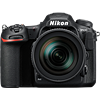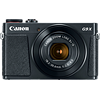Main
Model
Price
Advantages
launch
Announced
Body type
Camera subcategory
Sensor
Effective pixels
Max resolution
Sensor size
Sensor type
Processor
Image ratio w:h
Other resolutions
Sensor photo detectors
Image
ISO
Boosted ISO (minimum)
Boosted ISO (maximum)
White balance presets
Custom white balance
Image stabilization
Uncompressed format
JPEG quality levels
Photography features
Minimum shutter speed
Maximum shutter speed
Aperture priority
Shutter priority
Manual exposure mode
Subject / scene modes
Built-in flash
External flash
Flash modes
Continuous drive
Self-timer
Metering modes
Exposure compensation
AE Bracketing
WB Bracketing
Flash range
Screen / viewfinder
Articulated LCD
Screen size
Screen dots
Touch screen
Screen type
Live view
Viewfinder type
Viewfinder coverage
Viewfinder magnification
Videography features
Resolutions
File Format
Microphone
Speaker
Videography notes
Optics & Focus
Autofocus
Digital zoom
Manual focus
Number of focus points
Lens mount
Focal length multiplier
Focal length (equiv.)
Optical zoom
Maximum aperture
Normal focus range
Macro focus range
Physical
Weight (inc. batteries)
Dimensions
Environmentally sealed
Battery
Battery details
Battery Life (CIPA)
Storage
Storage types
Storage included
Connectivity
USB
HDMI
Microphone port
Headphone port
Wireless
Wireless notes
Remote control
Other features
Orientation sensor
Timelapse recording
GPS
GPS notes
Samples
Videos
Summary
The Nikon D500 maximum resolution of 5568 x 3712 pixels (21 megapixels) is better than the PowerShot G9 X Mark II highest resolution of 5472 x 3648 pixels (20 megapixels). The Nikon D500 is equipped with larger sensor compared to the PowerShot G9 X Mark II: APS-C (23.5 x 15.7 mm) versus 1″ (13.2 x 8.8 mm). This is very significant difference between these cameras because big sensor allows the camera owner to shoot photos of the higher quality. The Nikon D500 offers a wider ISO range of 100-51200 than 125-12800 ISO range of the PowerShot G9 X Mark II. This ISO range let the camera owner to shoot better photos in more difficult situations. The Nikon D500 provides more number of white balance presets - 12. It gives the camera owner more control over colour. The PowerShot G9 X Mark II offers better 4x digital zoom.
The Nikon D500 is produced with tilting LCD that will let the camera owner to capture pictures from any interesting angle. The Nikon D500 screen is better as it has more screen dots 2,359,000 in compare to 1,040,000 dots of the PowerShot G9 X Mark II display. The higher dot count screen is better for reviewing photos on your camera. The Nikon D500 offers better highest shutter speed - 1/8000 second.
The PowerShot G9 X Mark II is equipped with built-in flash. The Nikon D500 supports external flash. An external flash provides superior control over the exposure and lighting of the subject in dim light and in bright light situations where you need to fill-flash. The Nikon D500 battery life is better in compare to the PowerShot G9 X Mark II battery life. According to CIPA standards the camera owner will be able to take 1240 shots with the D500 and only 235 with the PowerShot G9 X Mark II. The PowerShot G9 X Mark II weighs 206g which is 654g lighter than the weight of the Nikon D500. The Nikon D500 can utilize optional accessory GPS devices. This feature can be useful if the camera owner is a traveller, to be able to go into the image metadata and find out exactly where a picture was captured.
The Nikon D500 has 16 advantages and the PowerShot G9 X Mark II only 4 so the D500 becomes the best choice. Get the list of the best offers on Amazon.


